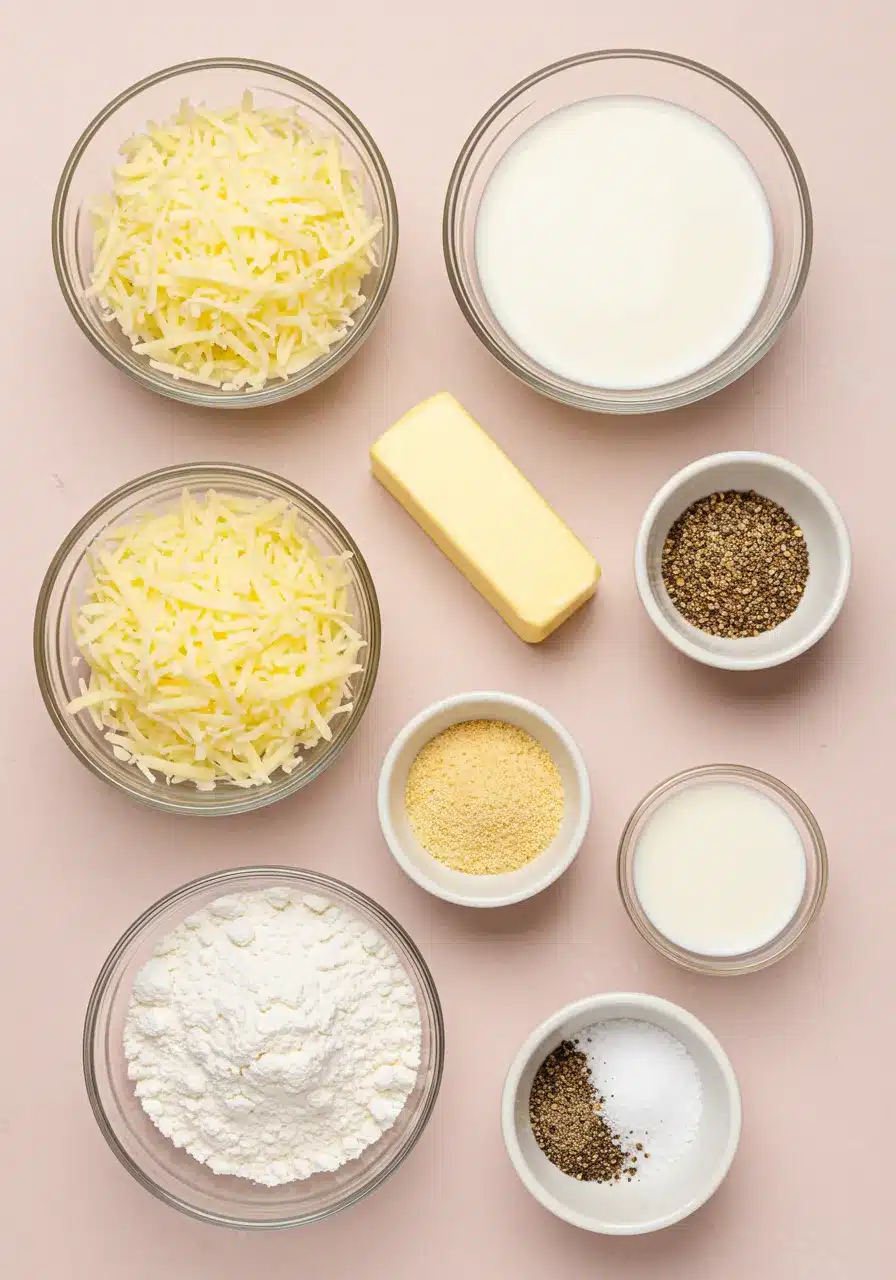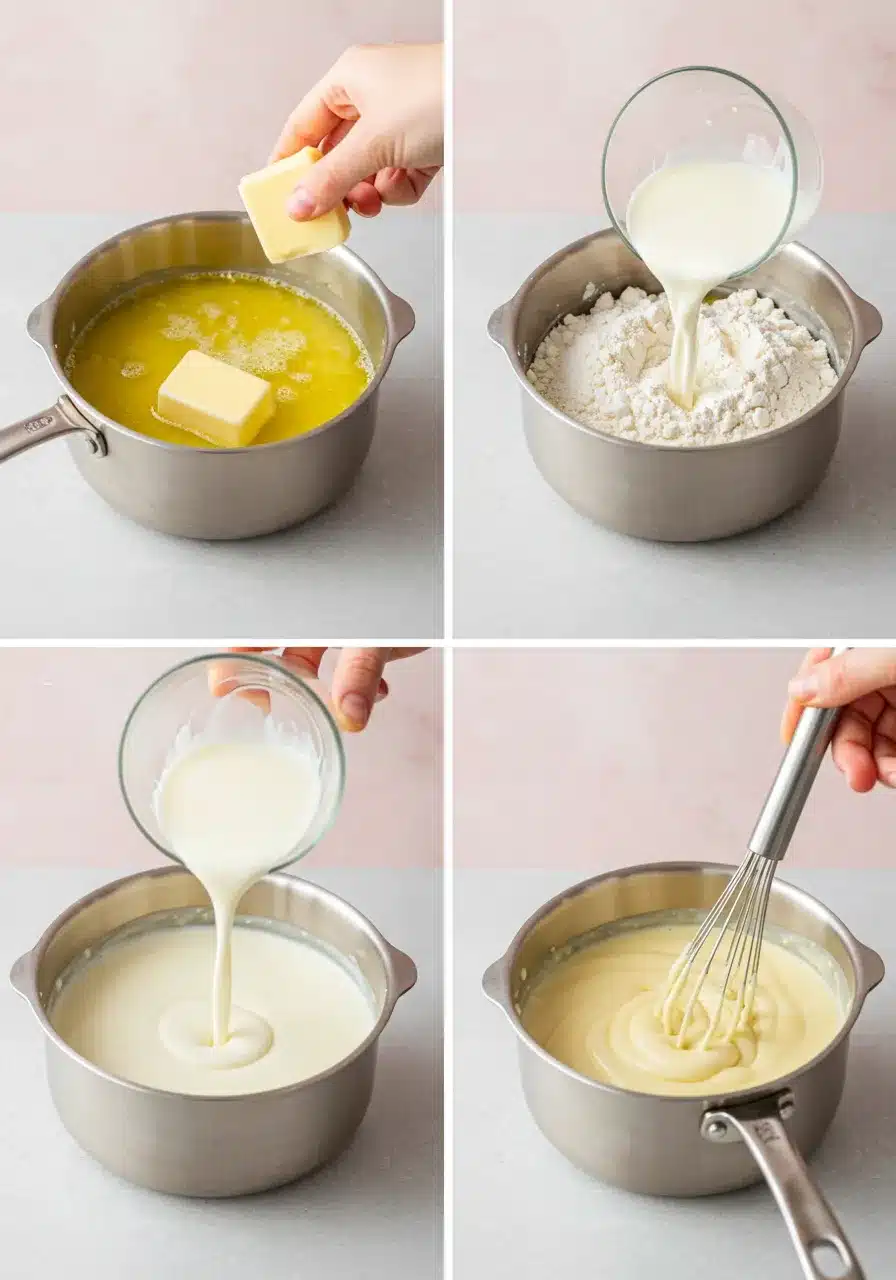Welcome to Recipes2Gather, where we celebrate the flavors that make everyday meals extraordinary. Today, we’re spotlighting one of Italy’s most delicious and underrated cheeses: Asiago cheese. If you love bold, nutty flavors and crave a cheese that can melt beautifully yet stand on its own, you’re in the right place.
Asiago is more than just a tasty wedge on a cheeseboard. It’s a versatile ingredient that brings a punch of flavor to everything from creamy pastas and paninis to salads and sauces. Depending on its age, it can be buttery and smooth or sharp and crumbly—giving you loads of room to play in the kitchen.
Print
Asiago Cheese Recipes That Are Bold and Delicious
- Total Time: 15 minutes
- Yield: 4 servings
Description
This creamy, bold Asiago cheese sauce is perfect for pasta, veggies, or sandwiches. Easy to make and packed with nutty, savory flavor.
Ingredients
- 2 cups grated Asiago cheese
- 1 tbsp butter
- 1 tbsp flour
- 1 cup milk or cream
- 1/2 tsp garlic powder
- 1/4 tsp black pepper
- Salt to taste
Instructions
- Melt Butter: Heat butter in a pan until fully melted.
- Whisk in Flour: Add flour and whisk for 2 minutes until smooth.
- Add Milk: Pour in milk slowly, whisking to remove lumps.
- Thicken Sauce: Bring to a simmer and stir until thickened.
- Stir in Cheese: Add Asiago and seasonings, stirring until fully melted.
- Taste and Serve: Adjust salt and enjoy over your favorite dish.
Notes
Use fresh Asiago for best results. Sauce thickens as it cools, so use while warm.
- Prep Time: 5 minutes
- Cook Time: 10 minutes
- Category: Appetizer
- Method: Stovetop
- Cuisine: Italian-American
Whether you’re a cheese connoisseur or just branching out from cheddar, you’ll find plenty to love about this Italian gem. And if you’ve already tried favorites like our Colby Cheese Magic or explored the wonders of Goat Cheese Appetizers, Asiago is your next bold step. Let’s dive into what makes this cheese so special—and how you can use it to elevate everyday meals.
Key Benefits
Asiago cheese doesn’t just bring flavor—it brings versatility and nutrition to the table too. Here’s why it’s worth adding to your cheese rotation:
- Bold, Distinctive Flavor: Whether you choose fresh Asiago (Asiago Pressato) or aged (Asiago d’Allevo), you’re getting complex, nutty notes with a pleasant sharpness that enhances everything it touches.
- Melts Beautifully: Fresh Asiago is a dream for melting—use it in mac and cheese, grilled cheese sandwiches, or stirred into creamy risottos.
- Aged for Texture: Older Asiago crumbles nicely and adds a parmesan-like bite to salads, pasta, and even roasted veggies.
- High in Calcium and Protein: It offers a good source of bone-strengthening calcium and muscle-building protein.
- Pairs Well with Everything: Its bold flavor holds up in spicy dishes, complements mild ones, and plays well with wine, charcuterie, and fruit.
It’s also a fantastic cheese to experiment with in recipes like our Smoked Mac and Cheese or as a flavorful alternative in our Cottage Cheese Buffalo Chicken Dip. Asiago brings big flavor and works in just about anything—it’s a real star in the kitchen.
Ingredients for Asiago Cheese Dishes
Here’s a basic set of ingredients you’ll want on hand if you’re looking to use Asiago cheese in your cooking. This mix can build a fantastic cheese sauce or serve as the base for a savory bake:

- 1–2 cups grated Asiago cheese (choose fresh or aged based on your recipe)
- 1 tbsp butter
- 1 tbsp all-purpose flour
- 1 cup whole milk or heavy cream
- 1/2 tsp garlic powder
- 1/4 tsp black pepper
- Salt to taste
- Optional add-ins: cooked pasta, roasted vegetables, bread slices for melting, or salad greens
The cheese itself brings plenty of character, so you don’t need a long ingredient list to make it shine. Want to use it for snacking? Slice up a wedge and pair it with homemade crackers or a simple tomato jam for a flavorful treat.
Step-by-Step Instructions for Asiago Cheese Sauce
Let’s walk through a classic and simple Asiago cheese sauce recipe—perfect for pasta, chicken, or veggie drizzles:

- Melt the Butter: In a medium saucepan over medium heat, melt butter until fully liquid.
- Make a Roux: Stir in the flour and whisk constantly for about 1–2 minutes until it forms a smooth paste.
- Add the Milk: Slowly pour in the milk while whisking, making sure there are no lumps.
- Simmer and Thicken: Let it bubble gently while you stir, and in about 5 to 7 minutes, it’ll start to thicken up nicely.
- Add Cheese and Seasoning: Turn the heat down low, then mix in the Asiago along with the garlic powder and a bit of black pepper. Keep stirring until the cheese fully melts and the sauce turns smooth and rich.
- Taste and Adjust: Add salt if needed and use immediately while warm.
Use it over cooked pasta or drizzle onto a sandwich before toasting—it’s rich, tangy, and deeply comforting.
Pro Tips and Variations for Asiago Cheese Recipes
Want to experiment with Asiago? Here are some insider tips and variations to keep things delicious:
- Fresh vs. Aged: Use fresh Asiago for melting and aged Asiago for grating or crumbling. Each version brings something special.
- Pair With Other Cheeses: Blend with mild cheeses like mozzarella or rich ones like Muenster for layered flavor.
- Grate Fresh: Pre-grated cheese doesn’t melt as well and can have anti-caking agents. Always grate fresh when possible.
- Add Herbs: Try stirring in chopped rosemary, thyme, or basil to enhance the flavor.
- Use in Stuffed Breads or Pastries: Asiago adds a wonderful bite to savory bakes like cheese rolls or stromboli.
This cheese can level up your meals in so many creative ways—it’s all about matching the texture and taste to the dish.
Serving Suggestions for Asiago Cheese
There’s no wrong way to enjoy Asiago cheese—but here are some ideas to make your meals more exciting:
- Cheese Boards: Pair aged Asiago with honey, grapes, nuts, and crusty bread for a balanced cheese platter.
- Next-Level Sandwiches: Layer it on hot roast beef or turkey with sweet onions, and you’ve got a sandwich that rivals your favorite deli.
- Savory Breakfast: Grate into scrambled eggs or melt into an omelet for a sharp, satisfying breakfast.
- Topping Ideas: Try it on crispy broccoli, warm baked potatoes, or even popcorn when you’re feeling fancy.
- In Pasta or Risotto: Stir it into creamy sauces, especially for dishes like mushroom risotto or baked penne.
Or pair it with a sip of red wine or sparkling water and enjoy it with simple snacks—just like we do with Port Wine Cheese Spread.
Trasted Resources on Asiago Cheese
- Healthline breaks down the nutritional benefits of cheese, including calcium and protein content.
- Bon Appétit offers tips on how to store specialty cheeses like Asiago.
- Serious Eats gives expert advice on building the perfect cheese board featuring bold cheeses like Asiago.
Conclusion
Asiago cheese brings the best of both worlds to your kitchen—bold flavor and flexibility. Whether melted into sauces, shaved onto salads, or served on a cheese board, it’s a cheese that deserves more love in American home cooking. With its rich taste and easy-to-use texture, you’ll find yourself reaching for it again and again.
So next time you’re shopping for cheese, skip the usuals and grab a wedge of Asiago. Experiment with it in your favorite recipes or try something new. Either way, you’ll be adding a delicious touch that truly brings people together around the table.
FAQs
Fresh Asiago (Pressato) is soft and good for melting. Aged Asiago (d’Allevo) is firmer, more crumbly, and has a stronger flavor—perfect for grating.
Yes! Especially in pastas, risottos, and salad toppings. It adds a deeper, nuttier flavor.
Cover it in parchment or wax paper, then stash it in a sealed container in the fridge to keep it fresh. It keeps best when stored this way for up to 3 weeks.
Aged Asiago has very low lactose, which many lactose-intolerant folks can tolerate. Just take a peek at the label so you know exactly what you’re getting.
Yes—but only if it’s aged. Popping fresh Asiago in the freezer can change its texture—it tends to get a bit crumbly.


1 thought on “Asiago Cheese Recipes That Are Bold and Delicious”